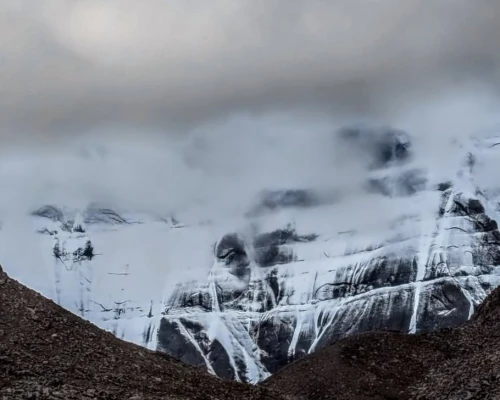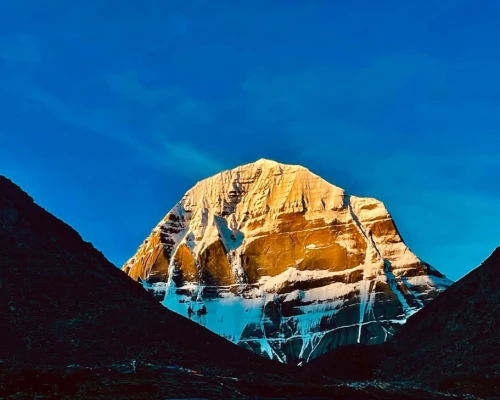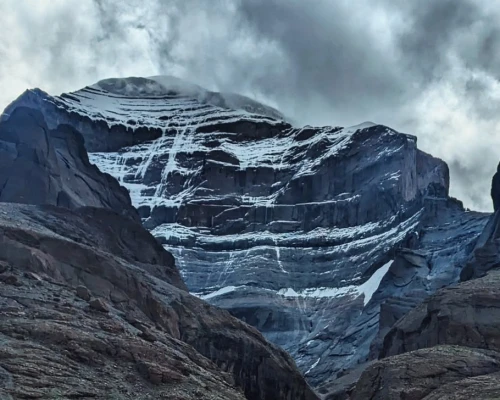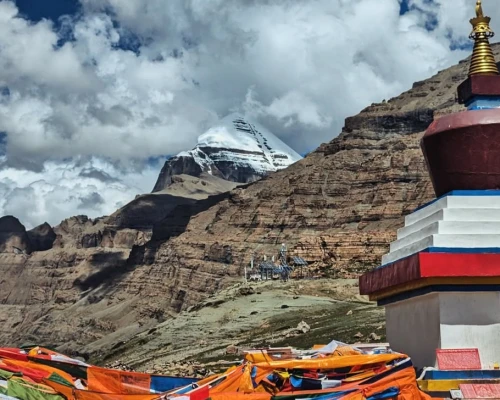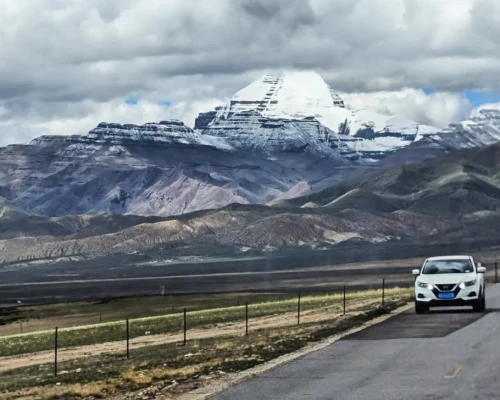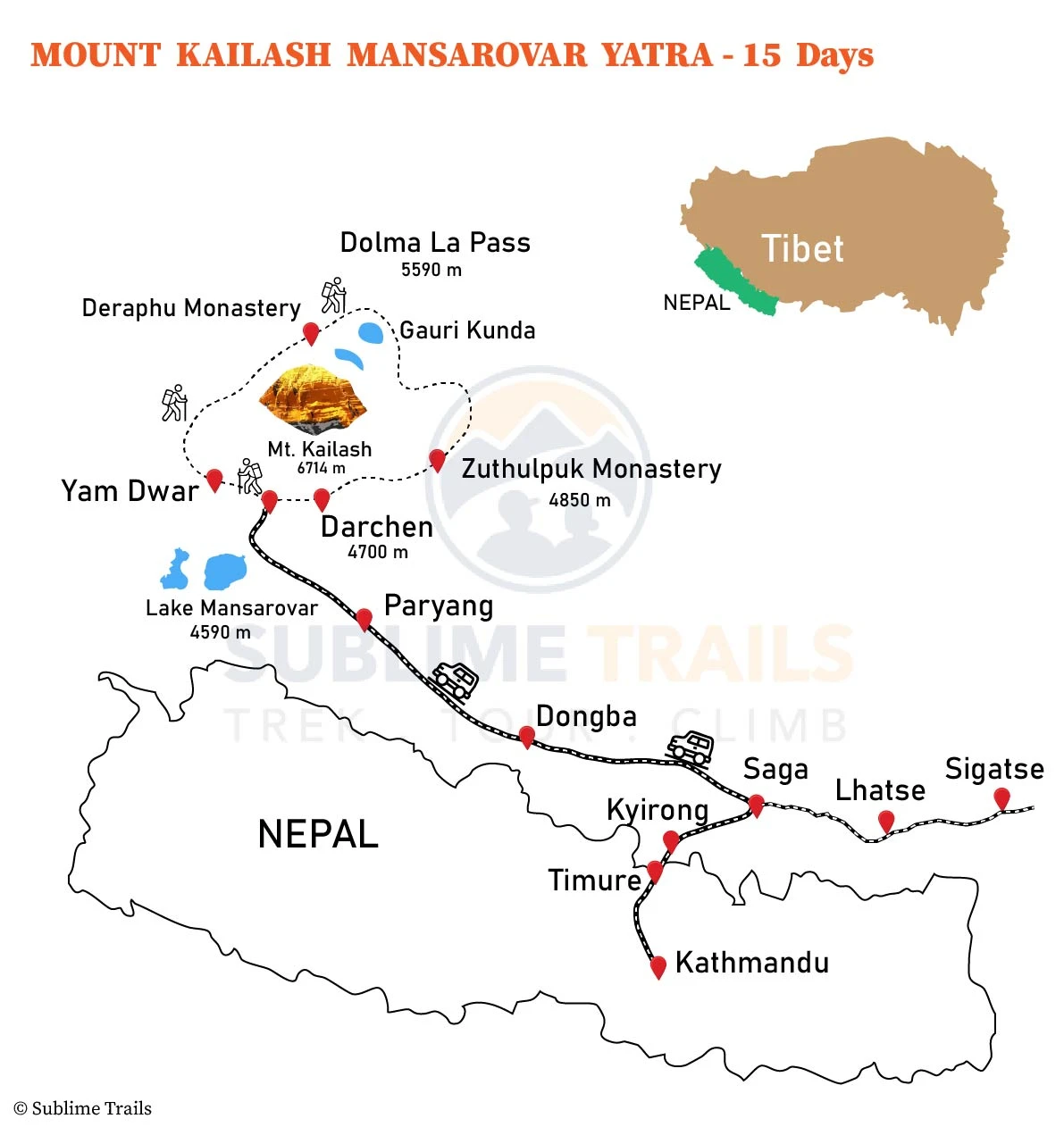Kailash Mansarovar Yatra from Nepal Booking 2026/2027
Starting in Nepal and winding through the mystical landscapes of Tibet, the Kailash Mansarovar overland tour takes you to the sacred Mount Kailash, believed by Hindus, Buddhists, Jains, and Bon followers to be the center of the universe. At the foot of this divine peak lies the tranquil Lake Mansarovar, a place so pure and powerful that even its waters are said to cleanse lifetimes of karma.
Guided with care and devotion, our pilgrimage combines spiritual depth with logistical ease, perfectly balancing ancient rituals with modern comfort. Whether you're drawn by faith, curiosity, or the raw pull of the mountains, this Himalayan pilgrimage promises an experience that will stay with you forever.
Join us—and discover what it means to arrive truly.
“A trek or a mountaineering feat is always about achievement, to make yourself bigger than who you are. But a pilgrimage is about dissolution, to subdue yourself and become nothing, No-thing.” - Sadhguru
Kailash Mansarovar Yatra from Nepal
Starting your Kailash Mansarovar Yatra from Nepal is likely the most enriching way to experience this sacred Himalayan pilgrimage. Nepal, the land of gods and mountains, is not just geographically closer to Mount Kailash—it is spiritually aligned with the journey itself. From ancient Shiva temples to majestic Himalayan landscapes, Nepal provides the perfect gateway into Tibet, both logistically and spiritually.
This Kailash Mansarovar tour package from Kathmandu is meticulously planned to ensure proper acclimatization, safety, and spiritual depth at every stage. Your pilgrimage begins in Kathmandu, a city steeped in devotion and tradition. Here, you'll receive special blessings at revered Hindu temples like Pashupatinath and Guhyeshwori, visit ancient shrines at Swayambhunath and Boudhanath, and explore the royal heritage of Kathmandu Durbar Square.
Furthermore, after performing rituals at Saga Mahadev and Doleshwor Mahadev—believed to be the head of Kedarnath—you’ll be spiritually and mentally prepared for the transformative path ahead.
The journey continues overland toward the Gyirong border, where you officially enter Tibet. After acclimatizing in the serene Kyirong Valley, you travel across the stark and mystical Tibetan plateau, passing through Saga before reaching the sacred Lake Mansarovar. Here, pilgrims perform ritual baths and meditations before continuing to Darchen, the base camp for the Mount Kailash Kora.
The Kora—a three-day circumambulation of Mount Kailash—takes you through Yama Dwar, Deraphuk, Dolma La Pass (5,620m), and Zuthulphuk, offering breathtaking views and spiritually charged landscapes. Completing the Parikrama is a deeply personal and often life-changing experience.
After the Kora, the journey loops back through Saga and Kyirong, before finally returning to Kathmandu for departure.
Since you’re wondering about the Kailash Mansarovar Yatra cost from Nepal, or seeking an all-inclusive Kailash Mansarovar tour package from Nepal that offers both comfort and authenticity, Sublime Trails offers tailored options suited to your needs.
Whether you come for devotion, discovery, or inner transformation, starting your Kailash Mansarovar Yatra from Nepal ensures that your sacred journey begins with the right intentions—and the right blessings.
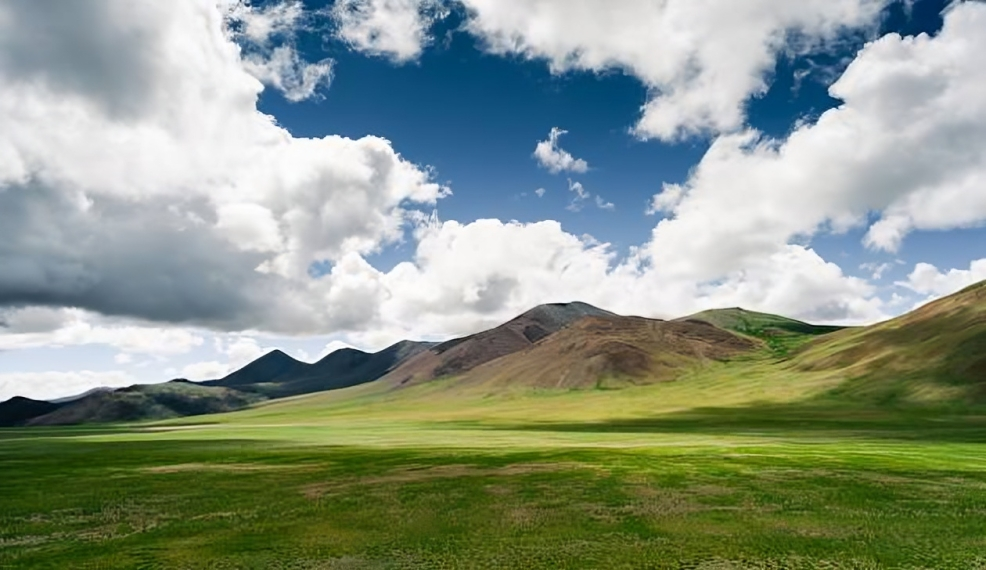
Significance of Mount Kailash and Lake Mansarovar
In the far west of the Trans-Himalayan region, Mount Kailash stands apart, not just geographically, but in meaning. It rises to 6,638 meters, with a distinct, symmetrical shape and a snow-covered peak that has never been climbed. Unlike other Himalayan peaks that attract climbers, Mount Kailash is off-limits out of deep respect.
South of the mountain lies Lake Mansarovar, a high-altitude freshwater lake at over 4,500 meters. It’s one of the highest lakes in the world, and it's known for its clear, still waters. For pilgrims, it’s a major spiritual destination in its own right.
What makes this area even more significant is its geography. Four major rivers—the Indus, Sutlej, Brahmaputra, and Karnali—originate from this region. This unique combination of natural features and religious significance is what draws people from across Nepal, India, Tibet, Bhutan, and elsewhere to take part in the Kailash Mansarovar Yatra.
For Hindus, Mount Kailash is the earthly abode of Lord Shiva. Pilgrims believe that circumambulating the mountain, known as Parikrama, washes away the sins of a lifetime and grants liberation. A holy dip in Lake Mansarovar, created in the mind of Brahma according to legend, is believed to purify the soul and body alike.
For Buddhists, particularly Tibetan Buddhists, Kailash is known as Kang Rinpoche—the "Precious Snow Jewel." It is revered as the dwelling place of Demchok (Chakrasamvara), the deity representing supreme bliss. Tibetan Buddhist pilgrims typically perform the Kora clockwise, often prostrating themselves along the entire route, seeking merit and enlightenment through deep devotion and physical sacrifice.
In Jainism, Mount Kailash is known as Ashtapada, where Rishabhdev, the first Tirthankara, attained moksha (liberation). Jains regard the mountain as the site of final spiritual release, and their pilgrimage centers on reverence and silent contemplation.
For followers of the ancient Bon religion, which predates Buddhism in Tibet, Mount Kailash is the seat of Sipaimen, the sky goddess, and a source of mystical power. Bonpo practitioners perform their Kora counter-clockwise, distinct from the other traditions, but equally intense in its spiritual purpose.
Despite these differences in mythology, symbols, and rituals, what unites all these faiths is the deeply personal and transformative nature of the journey. Pilgrims don’t come to conquer Mount Kailash—they come to surrender. Whether one seeks penance, merit, healing, or transcendence, the Kailash Mansarovar Yatra is not just a physical journey across remote terrain, but an inward journey that leaves a lasting mark on the soul.
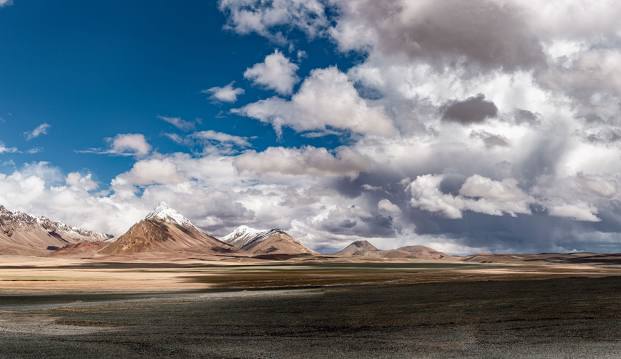
Why Travel with Sublime Trails
Unmatched Local Knowledge
As a trusted Nepal-based operator, we bring rich regional expertise that international operators often lack. Our understanding of the Himalayan terrain, border dynamics, and local customs ensures smooth transitions at every stage, especially important when navigating complex cross-border travel between Nepal and Tibet. You travel with a team that knows the region intimately and values its spiritual essence.
High-Altitude Preparedness and Safety
Traveling to remote, high-altitude locations like Dolma La Pass (5,620m) requires more than willpower — it requires preparation. We provide oxygen cylinders, pulse oximeters, and trained staff to monitor your health and well-being throughout the journey. With acclimatization days built into the schedule and constant support, you can journey with confidence and peace of mind.
Seamless Permit and Logistics Management
Navigating permits and bureaucratic checkpoints in this region can be challenging. That’s why we take care of all travel documentation, border permits, Chinese visas, and local regulations on your behalf. Whether it's managing the Kyirong border entry or ensuring your accommodation and transport are ready at each stop, we streamline every detail so you stay focused on your personal pilgrimage.
Culturally and Spiritually Enriching
We don’t just transport you to sacred places — we help you understand them. Our guides share insights into the multi-faith significance of Mount Kailash and Lake Mansarovar, highlighting the spiritual practices of Hinduism, Buddhism, Jainism, and Bon. This deepens your experience, transforming the Yatra from a trek into a profound spiritual journey.
.webp)

